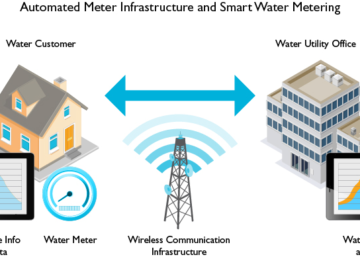Water is vital for life and plays an essential role for economic development of countries. In many parts of the world, demand for water is outstripping the availability of water.
Water is increasingly seen as a scarce resource that has an economic value and thus needs to be managed carefully to ensure that it is used efficiently. This needs to be achieved whilst managing competing demands for water from different water users, such as households, industry and agriculture, as well as ensuring the environment has enough water to sustain ecosystems.
The maturing water economy
An expansionary water economy is characterized by relatively low social cost of expanded water use, in total and at the margin. As the demand curve for delivered water shifts rightward, new projects can be developed on favourable sites. Not only are the immediate costs fairly low, but the costs arising as aging facilities need expensive renovation and delayed or unforeseen impacts emerge that are yet to be presented. The false impression that water is cheap may well gain currency under such conditions. If society chooses, it can subsidise water use at quite moderate cost in the near term and satisfy, via new projects, the increased demands thus induced.
| Item | Expansionary phase | Mature phase | |
| 1 | Long-run supply of impounded water | Elastic | Inelastic |
| 2 | Demand for delivered water | Low, but growing; elastic at low prices, inelastic at high prices | High and growing; elastic at low prices, inelastic at high prices |
| 3 | Physical condition of impoundment and delivery systems | Most is fairly new and in good condition | A substantial proportion is aging and in need of expensive repair and renovation |
| 4 | Competition for water among agricultural, industrial and urban uses, and instream flow maintenance | Minimal | Intense |
| 5 | Externality, etc, problems | Minimal | Pressing: rising water tables, land salinisation, saline return flows, groundwater salinisation, water pollution, etc |
| 6 | Social cost of subsidising increased water use | Fairly low | High and rising |
During the expansionary phase, public policy economists seem chiefly concerned with the appropriate rate of expansion and subsidisation of the water economy by the public at large. Thus, one observes a major concern with project evaluation and benefit-cost analysis; the concern with water pricing tends to be framed in terms of public subsidisation of water rather than the efficient use of strictly limited supplies of water (Davidson 1969).
By its very nature, the expansionary phase inevitably comes to an end. The mature phase of the water economy is characterised by sharply rising incremental cost of water supply, more direct and intense competition among different kinds of users, and greatly increased interdependencies among water uses.
The major things that have to be kept in mind while trying to decide upon which pricing model to adopt should include the following:
- Generating revenues to finance new developments and the rehabilitation of aging projects
- Dampening the growth in the quantity of water demanded
- Promoting and directing the reallocation of water in response to emerging patterns of absolute and relative scarcity, externality and similar problems, and conflicts among different kinds of users of water

An example of a water pricing model
Keeping the above objectives in mind, we decide upon the pricing model to adopt. Some of the concerns or things to decide upon to come up with the relevant pricing model include the following:
- Efficiency and fairness concerns – We must ensure that the water supply system is efficient and also the pricing model is fair to all. For this, we can make the pricing flexible depending upon the location, time of the day. We can also make the pricing flexible depending upon the supply or the demand for water.
- Temporal or seasonal rates – During the summer season, demand for water increases compared to that of winters. Also, this is the time of the year when the supply of water is minimal. The rates should take these factors into account.
- Development decisions or capacity restrictions – Determination of water price when facing capacity restrictions has been an issue of research for both water supply. It is often found that peak-load pricing may postpone investment in system development in comparison with other inefficient pricing models.
- Scarcity – There are many ways that pricing mechanisms can be used to address scarce resources. Seagraves and Easter (1983) indicated that during seasonal shortages, higher marginal cost prices should be applied in order to recover fixed costs to ration all of the water during peak demand. In 2000, Johansson pointed out that many informal allocation systems had developed in the absence of prices or formal markets to address the scarcity.
- Marginal value pricing – Three methods of estimating the marginal product value of water include: (i) The residual imputation which deducts from gross product value the costs of inputs other than water and then, attributes the whole of the remainder to the water input, (ii) The linear programming technique which is well suited to estimate the marginal value of water; (iii) The production function technique which is used to derive the marginal product value of water.
Most of the economists agree that if water users pay the marginal cost of its supply water use efficiency, would be significantly improved. The marginal product value is used to assess the efficiency of inputs applied. In other words, a deviation of the marginal product value from price represents inefficient use of input. Finally, there exists currently a debate that while water pricing programs promote economically and environmentally efficient water use they may not always be appropriate as water pricing is often perceived as a policy intervention that negatively affects poor farmers. Hence, whichever pricing model is used, should be used after assessing all of the above parameters mentioned.
References








